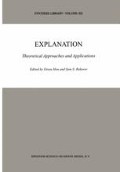Abstract
Archaeology is an interdisciplinary field of study with implications that reach far beyond academia. Today, most people recognize the close connections between archaeology and the state. Governments regulate, at least indirectly, most archaeological work since they are charged with preserving their countries’ cultural heritage. Archaeological excavation is so expensive that government money is required to support any large scale project. Archaeological work is politically important because archaeologists can trace the occupation of ethnic groups in particular territories over significant periods of time. By combining archaeological information about former inhabitants of a land with politicians’ contemporary cultural views about the continuity of property rights, governments attempt to challenge or to defend present political boundaries.1
Access this chapter
Tax calculation will be finalised at checkout
Purchases are for personal use only
Preview
Unable to display preview. Download preview PDF.
References
Binford, L., (1972). An Archaeological Perspective, New York: Seminar Press.
Binford, S. R. and Binford, L., (eds.), (1968). Perspectives in Archaeology, Chicago: Aldine.
Clarke, D., (1968). Analytical Archaeology, London, Methuen.
Collingwood, R. (1929). An Autobiography, Oxford: Oxford University Press.
Collingwood, R., (1930). Archaeology ofRoman Britain, New York: Dial.
Conkey, M. and Gero, J., (eds.), (1991). Engendering Archaeology: Women and Prehistory, Oxford: Blackwell.
Dunnell, R., (1992). “Archaeology and evolutionary science”, Quandaries and Quests: Visions ofArchaeology’s Future, L. Wandsnider (ed.), 209–224, Carbondale: Center for Archaeological Investigations, Southern Illinois University at Carbondale, Occasional Paper No. 20.
Flannery, K., (1968). “Archaeological systems theory and early Mesoamerica”, in Anthropological Archaeology in the Americas, B. J. Meggars (ed.) 67–87, Washington D. C: Anthropological Society of Washington.
Flannery, K., (1982). “The golden Marshalltown: A parable for the archeology of the 1980’s”, American Anthropologist, 84: 265–278.
Grayson, D., (1983). The Establishment of Human Antiquity, New York: Academic Press.
Hempel, C., (1965). Aspects of Scientific Explanation, New York: The Free Press.
Hempel, C., (1966). Philosophy ofNatural Science, Englewood Cliffs, N.J.: Prentice-Hall Inc.
Hodder, I. (ed.), (1987). The Archaeology of Contextual Meanings, Cambridge: Cambridge University Press.
Hodder, I., (ed.), (1987). Archaeology as Long-Term History. Cambridge: Cambridge University Press.
Kosso, P., (1989). “Science and objectivity”, Journal of Philosophy, 86: 245–257.
Kosso, P., (1991). “Method in archaeology: Middle-range theory as hermeneutics”, American Antiquity, 56: 621–627.
Kuhn, T., (1962, 1970, 2nd. ed.). The Structure of Scientific Revolutions, Chicago: University of Chicago Press.
Longacre, W., (1968). “Some aspects of prehistoric society in east-central Arizona”, in New Perspectives in Archaeology,. Binford, S. R. and Binford, L. (eds.) 89–102, Chicago: Aldine.
Lyman, L., O’Brien, M. J. and Dunnell, R. C., (eds.), (1997). The Rise and Fall of Culture History, New York: Plenum Press.
Mach, E., (1996/1885 original German ed.). The Analysis of Sensations, London: Routledge.
Patrik, L., (1985). “Is there an archaeological record?”, Advances in Archaeological Method and Theory, 8: 27–62.
Pinsky, V. and Wylie, A. (eds.), (1989). Critical Traditions in Contemporary Archaeology, Cambridge: Cambridge University Press.
Radcliffe-Brown, A. R., (1952). Structure and Function in Primitive Society, Glencoe: The Free Press.
Rathje, W., (1992). Rubbish!: The Archaeology of Garbage, New York: Harper Collins Publishers.
Ronen, A., (1995). “Core, periphery and ideology in aceramic Cyprus, Quartär, 45–46, 177–206.
Sabloff, J., Binford, L., and McAnany, P., (1987). “Understanding the archaeological record”, Antiquity 61: 203–209.
Salmon, M., (1980). “Reply to Lowe and Barth”, American Antiquity, 45: 575–579.
Salmon, W., (1970). Statistical Explanation and Statistical Relevance, Pittsburgh: University of Pittsburgh Press.
Salmon, W., (1984). Scientific Explanation and the Causal Structure of the World, Princeton: Princeton University Press.
Salmon, W., (1998). Causality and Explanation, Oxford: Oxford University Press.
Salmon, M. and Salmon, W., (1979). “Alternative models 1979 of explanation”, American Anthropologist, 81,1: 61–73. Reprinted in [Salmon 1998].
Schiffer, M., (1976). Behavioral Archaeology, New York: Academic Press.
Shanks, M. and Tilley, C., (1987). Re-constructing Archeology. Theory and Practice, Cambridge: Cambridge University Press.
Shanks, M. and Tilley, C., (1988). Social Theory and Archaeology, Albuquerque: New Mexico University Press.
Shanks, M. and Tilley, C., (1989). “Archaeology into the 1990s”, Norwegian Archaeological Review, 22: 1–54.
Tankersley, K., (1998), “Variation in the early paleoindian economies of late pleistocene eastern North America”, American Antiquity, 63, 1: 7–20.
Trigger, B., (1989). A History ofArchaeological Thought, Cambridge: Cambridge University Press.
Watson, P., Leblanc, S., and Redman, C., (1971). Explanation, in Archeology, New York: Columbia University Press.
Watson, R., (1990). “Ozymandias, king of kings: postprocessual radical archaeology as critique”, American Antiquity, 55: 673–689.
Wilk, R., (1999). “Whose forest? Whose land? Whose ruins? Ethics and conservation”, Science and Engineering Ethics, 5:367–374.
Archaeology 3rd ed., New York: W. H. Freeman and Co.
Wright, L., (1976). Teleological Explanations, Berkeley and Los Angeles: University of California Press.
Wylie, A., (1989). “The interpretive dilemma”, in [Pinsky and Wylie 1989], pp.18–28.
Wylie, A., (1989). “Archaeological cables and tacking: he implications of practice for Bernstein’s ‘options beyond objectivism and relativism”, Philosophy of the Social Sciences, 19: 1–18.
Wylie, A., (2001). Thinkingfrom Things: Essays in the Philosophy ofArchaeology, Berkeley and Los Angeles: University of California Press.
Editor information
Editors and Affiliations
Rights and permissions
Copyright information
© 2001 Springer Science+Business Media Dordrecht
About this chapter
Cite this chapter
Salmon, M.H. (2001). Explanation in Archaeology. In: Hon, G., Rakover, S.S. (eds) Explanation. Synthese Library, vol 302. Springer, Dordrecht. https://doi.org/10.1007/978-94-015-9731-9_10
Download citation
DOI: https://doi.org/10.1007/978-94-015-9731-9_10
Publisher Name: Springer, Dordrecht
Print ISBN: 978-90-481-5827-0
Online ISBN: 978-94-015-9731-9
eBook Packages: Springer Book Archive

